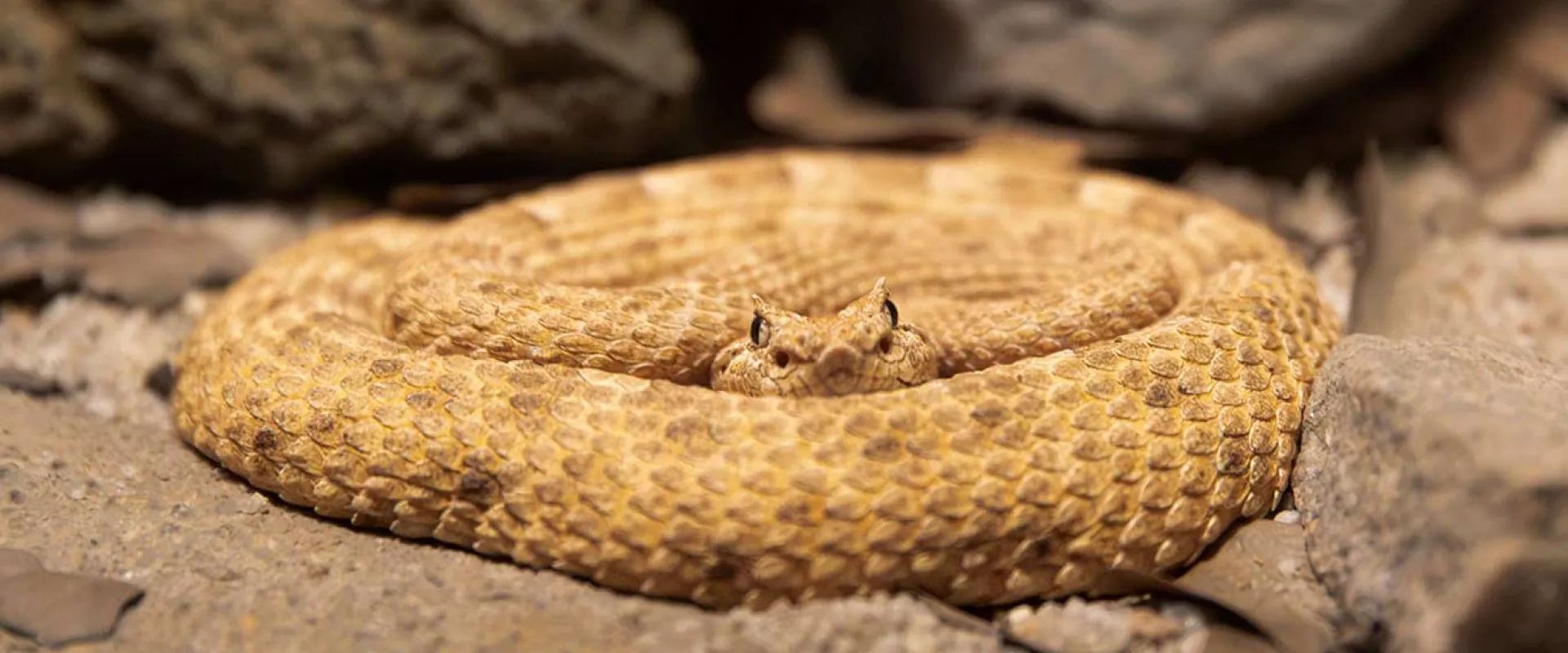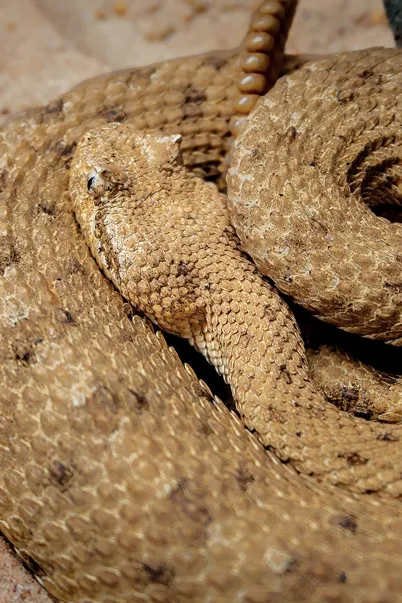About:
Did you know female sidewinders are much larger than males? Learn more about sidewinders.
Care & Wellness:
For the sidewinder, we provide an annual light cycle that replicates the seasonal changes in daylight in the wild. The nocturnal hallway in Desert is also on a reverse light cycle meaning it is nighttime in the hall during the day.
Behavior:
- Often sit just under the sand, waiting to ambush prey.
- Named for their "sidewinding" form of locomotion.
- Sidewinders often bite and release venom into their prey, and then track it by scent.
Endangered Status
- Least Concern (LC)


